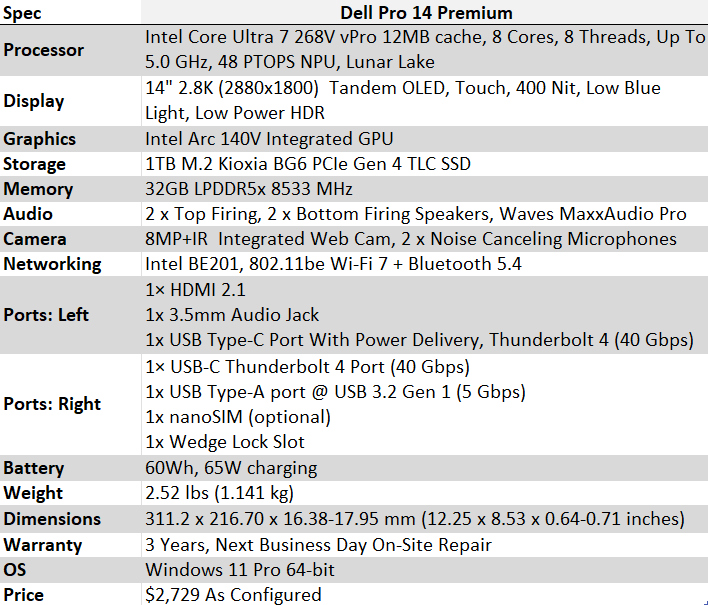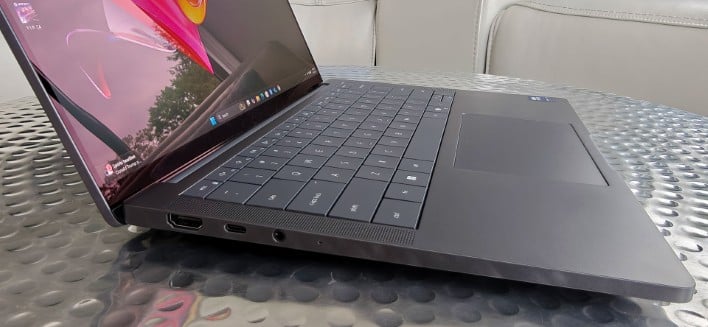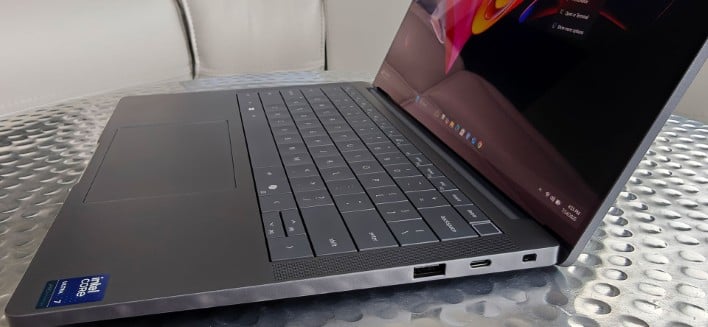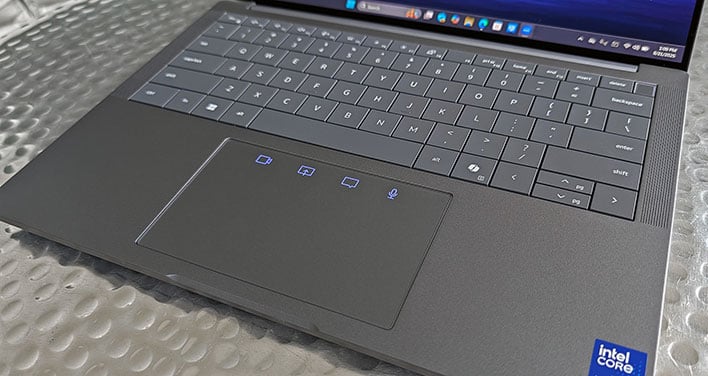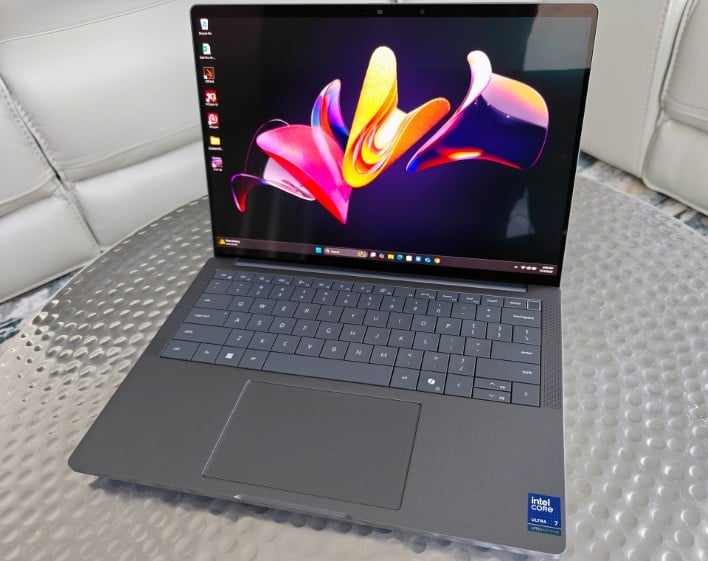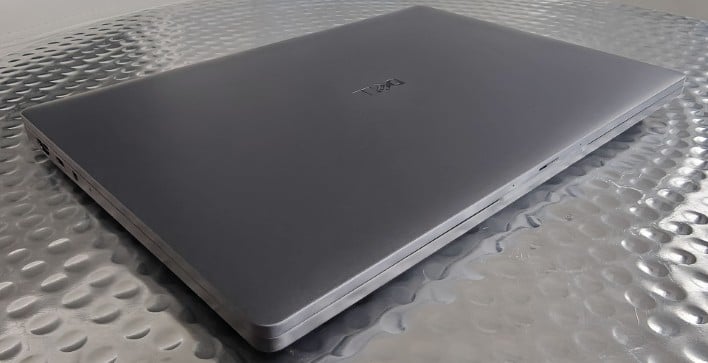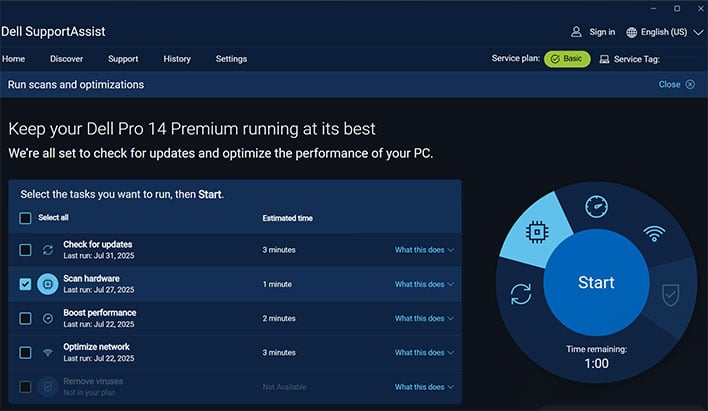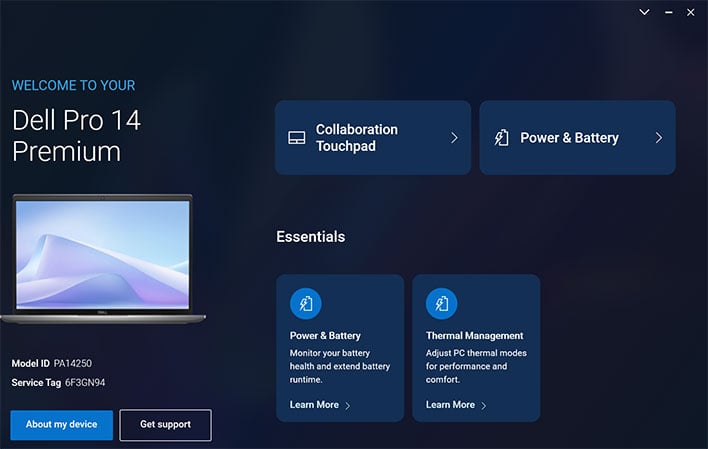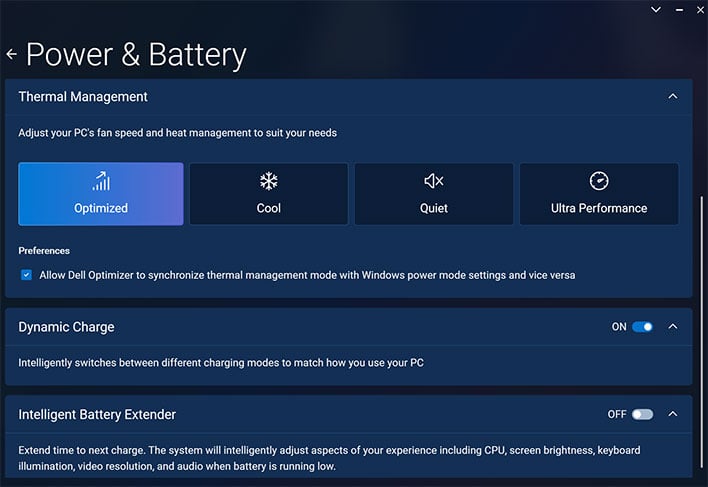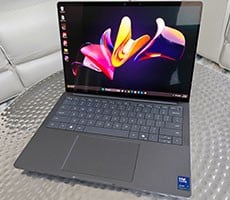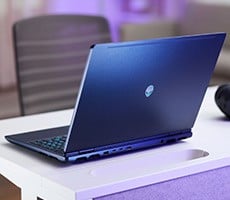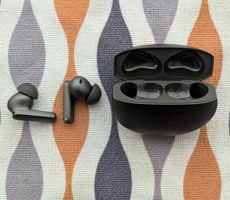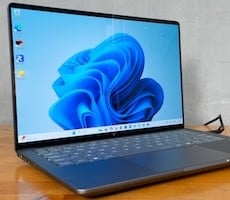|
Dell Pro 14 Premium Laptop: Starting At $1899, $2729 As Tested
The Dell Pro 14 Premium is feature-rich, high performance laptop, with a polarizing minimalist design and excellent battery life.
|
|
|
- Gorgeous Tandem OLED Display
- Exceptional Battery Life
- Quality Laptop Sound
- Respectable Performance, Especially Graphics & AI
- Very Light Weight
|
- Bland Design Language
- Build Materials Could Be Higher Quality
- Chassis Could Be Thinner
- Lack-Luster Storage Performance
|
|
Dell shook up its entire PC lineup this year, retiring long-standing brands like XPS, Latitude, Inspiron and Precision in favor of a simpler three-tier structure: Dell, Dell Pro, and Dell Pro Max, each with Base/Plus/Premium trims. It’s
a bold reset meant to make shopping easier (and to spotlight AI-PC features), though it's going to take a minute two for folks to unlearn Dell's old model badges. Of course, the iconic brand equity in the likes of XPS that Dell tossed aside in the move was a hard pill for many to swallow. Regardless, the new Dell Pro 14 Premium is essentially the spiritual successor to a high-end Latitude—now dressed in new threads, with modular serviceability touches that we’ll delve into later, and an optional but tasty Tandem OLED display in tow.
So the question for this review largely centers around whether or not the new Dell Pro 14 Premium is truly a worthy follow-on that sends its Latitude counterpart of days gone by off into the sunset, with a new hope of premium professional Dell laptops to come? Let's dig in.
Dell Pro 14 Premium Specs

Find The Dell Pro 14 Premium Starting At $1724 On Dell.com
That CPU and integrated GPU pairing here is Intel’s latest Lunar Lake silicon for ultraportables, with an 8-core CPU and Xe
2-based Arc 140V graphics, tuned for long battery life and modern AI workloads with a 48 TOPS NPU on board as well. Dell’s spec sheet confirms the Tandem OLED option and ComfortView Plus low blue light technology. In a nutshell, Tandem OLED display technology stacks multiple light-emitting layers instead of just one, boosting brightness, efficiency, and potentially even lifespan, compared to traditional single-layer OLED displays. Meanwhile, we're validated the memory speed in this config as indeed a snappy 8533 MT/s in Dell's top trims for this machine.
The Pro 14 Premium's dimensions and the 2.52-lb total weight keep it within a rare weight class of 14-inch machines, and it's one the major advantages of this machine over the
Dell 14 Premium (formerly Dell XPS 14) that we reviewed not long ago.
Design, Build Quality, Display And IO Expansion
Dell’s new “Pro” industrial design reads clean and very understated, with a magnesium chassis that keeps weight down without looking too plasticky, though it does feel less premium than aluminum or other composite laptop materials we've put hands on before. Dell also leans into sustainability here: the shell uses ~90% recycled magnesium, and internals incorporate recycled plastics and cobalt. The more interesting story is potential longevity of this machine, however. Modular main I/O boards and screwed-in USB-C ports are designed to be replaced more easily than soldered options, which is a win for fleets and road-warriors that are hard on ports. If a port fails, it can potentially just be replaced, saving a full mother board swap in the process.


Speaking of which, I/O options are solid for a thin-and-light business machine like the Dell Pro 14 Premium. On board are 2× Thunderbolt 4 (DP 2.1/PD), 1× USB-A (USB 3.2 Gen1), HDMI 2.1, combo audio jack, a wedge lock slot, and an optional nano-SIM tray on 5G configurations. That mix covers portability, docked desk duty and conference-room hookups without dongle clutter.

On the desk, the Pro 14 Premium feels fairly svelte, with a slightly thicker Z-height versus other sub-3 lb machines, but it's business-class sturdy, with decent overall rigidity and a MIL-STD-810H rating. The machine's magnesium skin is very thin in order to hit its 2.5 lb weight target but it still holds up relatively well. Dell’s latest zero lattice keyboards also use mini-LED backlighting to reduce power draw—a subtle but clever way to squeeze out more runtime—while keeping a traditional function-key row (no “capacitive adventures” here like with the Dell 14 Premium). We've grown accustomed to Dell's zero lattice keyboards, with their oversized key caps that seem to help minimize accidental keystrokes.
Then there's Dell's Collaboration Touchpad that offers a slick productivity trick. During Teams or Zoom calls, four backlit icons appear on the touchpad edge for quick mute, camera, share, and chat toggles. These thoughtful small features definitely help make hybrid work a bit more fluid.

The 14-inch Tandem OLED display Dell equipped our machine with is truly the star of this show. Dell lists this 2880×1800, touch-enabled panel at ~400 nits SDR with ComfortView Plus, leveraging LG Display’s
Tandem OLED stack for better efficiency and longevity. If you live in spreadsheets and slides by day and HDR streaming by night, this panel class delivers the inky blacks and color pop IPS can’t match. Dell also equipped this display's top bezel with an 8MP+ IR camera with "Intelligent Privacy" features that include Onlooker Detection, Look Away Detect and SafeShutter. There's also the added confidence of a mechanical shutter slider here.

Close the lid on the Dell Pro 14 Premium, and what you’re left staring at the embodiment of restraint. Dell went with a magnesium alloy cover that feels both light and deceptively strong. There’s just a hint of flex if you press down, but there's a confidence that this machine is built to ride in and out of backpacks without much wear and tear.
The finish is matte and professional, leaning toward a graphite-gray tone that whispers pure minimalism. Fingerprints are less of a nuisance here than with glossy aluminum designs, though they're not eliminated completely.
Front and center, Dell’s new, minimalist logo treatment quietly signals the brand’s design reboot. Gone is the chrome badge we’ve all seen for decades; in its place is a flat, understated mark that lines up with the company’s push toward modern simplicity across the new Pro line. It looks clean, contemporary, and in line with the target audience of this machine, which are no-nonsense business types.
Dell Pro 14 Premium Software Experience And Utilities
Dell’s software stack is lighter and more focused than it used to be. Dell Optimizer 6.x is the hub for power profiles, battery health/ExpressCharge, Intelligent Audio (noise suppression and mic tuning), display comfort features, and the Collaboration Touchpad controls that we mentioned previously.
As a Copilot+ PC class device with an NPU on board, Windows 11 Pro features like Studio Effects and on-device AI enhancements are supported out of the box, and Dell layers in manageability and security tooling for IT shops (think vPro options, remote management hooks, and hardened BIOS features). If you’re coming from a Latitude, the intent is familiar—it’s just streamlined and rebranded.

Dell’s revamped SupportAssist isn’t just a background service—it’s become a more polished guardian for PC health. The updated utility quietly manages a handful of crucial chores: it scans for updates to drivers and firmware, preemptively flags potential hardware hiccups, and keeps your system lean by decluttering unnecessary files and tuning network settings, if you so choose. All in all, it kind of feels like Dell handed you a proactive co-pilot for system maintenance—there when you want it, and only subtly helpful when you don’t.
Thankfully, what you don’t get is the usual grab bag of third-party trialware — no pre-loaded McAfee nags, no consumer-grade cloud storage promos, no redundant anything. Just a clean Windows 11 Pro OS was installed on our machine, beyond these Dell utilities.
And with all of these particulars out of the way, why don't we take this new premium business class Dell laptop around our benchmark test track.



